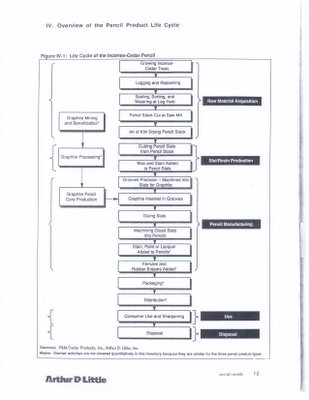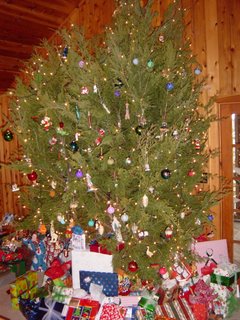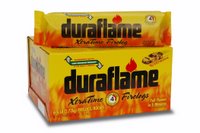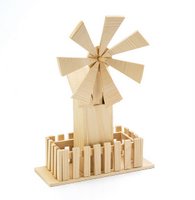 This photo is of my father back in the 1970s during a visit to Kitaboshi Pencil Company in Tokyo, Japan, where I actually visited today. He is being presented a guitar produced using California Incense-cedar by a member of the Sugitani family who are customers using our pencil slats for their products. This gentleman is now retired, but I happened to see him today, he says he still plays guitar every day and had that guitar specially commissioned for my father as a gift. Look for my upcoming post about the history of Kitaboshi Pencil and their products that we will begin selling on Pencils.com next week. California Incense-cedar used in our pencil slats, our customers’ pencils using our slats (and in this one of a kind guitar) is fully compliant with the US Lacey Act which is the main subject of this post.
This photo is of my father back in the 1970s during a visit to Kitaboshi Pencil Company in Tokyo, Japan, where I actually visited today. He is being presented a guitar produced using California Incense-cedar by a member of the Sugitani family who are customers using our pencil slats for their products. This gentleman is now retired, but I happened to see him today, he says he still plays guitar every day and had that guitar specially commissioned for my father as a gift. Look for my upcoming post about the history of Kitaboshi Pencil and their products that we will begin selling on Pencils.com next week. California Incense-cedar used in our pencil slats, our customers’ pencils using our slats (and in this one of a kind guitar) is fully compliant with the US Lacey Act which is the main subject of this post.
The recent news of the US Fish & Wildlife Service raid and seizure of Rosewood and Ebony wood raw materials as well as guitars from Gibson Guitars and subsequent claims by Gibson’s CEO that the US government is over reaching in its actions has an interesting relevance to challenges also faced by our company and our customers in the U.S. pencil industry. Here are links to three articles about the Gibson issue over the past month:
- Trade Law Hits Note for Guitar Maker Gibson – September 19, 2011
- Gibson Guitars Wood Imports Case Raises Concerns – September 30, 2011
- Gibson Guitars CEO slams US raids as “Overreach” – October 12, 2011
At issue is the application of the 2008 Amendment to the Lacey Act, a law originally established in 1900 governing the illegal trafficking of hunted wildlife and game across state lines and since inception has continually expanded in scope and breadth to cover fish and plants. The law is administered by the Animal and Plant Health Inspection Service (APHIS) within the U.S. Department of Agriculture and jointly enforced with U.S. Department of Fish & Game which is the lead agency in the case against Gibson Guitars. Under the 2008 amendment the law was extended to plants, wood and products made from wood and plant materials. The amendment requires importers of applicable products to certify that the wood materials used in their products were not obtained from illegally harvested materials or include any protected or threatened tree species. The amendment implemented a number of documentation and declaration requirements that must now accompany each import shipment with respect to specific species used, country of origin of the trees from which the wood product was produced and statements relative to the legal harvesting of the trees used in the. Knowingly importing wood or wooden products covered by the law is a violation of the law subject to both civil and criminal penalties. Heralded as an improvement in environmental policy the amendment was also supported by the Bush Administration as a protectionist measure for the US timber and wood products industry against lower cost imported woods. While I have no specific knowledge of and cannot speak to the specific issues involved with Gibson’s case I can certainly state that illogical and inconsistent application of the rules process by government agencies responsible for enforcing the Lacey Act is a ripe example of the “law of unintended consequences” as with much government regulation. CalCedar has been deeply involved in addressing the 2008 Lacey Act amendment relative to compliance of our own pencil wood supply as well as understanding the impacts of the law on our company, our customers and the pencil industry supply chain as a whole. We have long taken an industry leadership position in assuring the wood resources we utilize are harvested from well managed forests according to applicable rules and regulations in any countries we source our wood from. We have and continue to support industry efforts to increase the overall sustainability and have been a pioneer in implementing FSC and SFI third party certification to an increasing proportion of our wood supply. Thus in concept implementation of the Lacey Act amendments in 2008 was a step in a positive direction with a goal of eliminating illegally sourced raw material or utilization of any threatened plant species. Though the standards applied as to what’s illegal or legal or threatened or not can vary from country to country as the Lacey Act simply requires compliance to the applicable laws in the country of harvest. Thus the level of added environmental protection here is inconsistent from country to country. The Lacey Act requirements added a whole new level of documentation and due diligence required for us to supply slats to our US based pencil manufacturing customers. This included updated investigations and documentation of our wood supply chain and added costs of consulting in the investigation with an accredited third party certification agency as to appropriate precautions including the added burden to segregate and/or eliminate any wood of potential concern and to maintain clear chain of custody of all our through the supply chain. All of this was already occurring with respect to our FSC and SFI material in both Cedar and Basswood, but we felt it important to apply these processes to the balance of our Basswood supply chain. Where we could not clearly document exact origin we sorted out the material to create yet another classification of inventory. Thus with respect to our Basswood pencil slats we now must keep separate inventory and track three different groups of products; FSC certified, Lacey Compliant and standard inventory which we do not believe is a compliance concern but will not take the risk of selling into the US market without clear chain of custody back to the forest. However, this burden of declaration documentation was not extended to the importers of pencils themselves. Thus wood sold to our customers who produce pencils in the US is subject to the documentation requirements while finished imported pencils are not, placing an added burden on U.S. pencil producers. Given that the majority of pencils consumed in the U.S. today and before the amendment took effect were imported this inconsistent application of the statute to intermediate vs. finished products hardly serves to protect US manufacturing jobs or to ensure that the majority of pencils sold in the US are indeed Lacey Act compliant. This does not mean many or even most pencils are not compliant, just that the chances are higher that they could be. As far as musical instruments are concerned importation of pianos and stringed musical instruments, including guitars, seem to have become subject to the documentation and declaration requirements in April 2010, so in this case it appears the compliance playing field may be a bit more level between US and Foreign producers in that industry. Next, the rules are not very specific on the level of sufficient due diligence to protect an importer from prosecution and civil and criminal penalties under the act. The “due care” principal is used which is generally contextually applied depending upon the level of organizational expertise and level of involvement in the supply chain of the importer of record. Thus as an experienced wood products manufacturer standards for “due care” applied to our company may be interpreted by the relevant agency differently than that of an importer of finished pencils who tends to rely solely upon the level of documentation they choose to request from their supplier. In many cases such suppliers are simply foreign trading companies, not manufacturers themselves, relying on the say so of their own supplier. With much pressure put on the price of imported pencils and other wood products this provides some level of incentive to less ethical suppliers to fudge in the information provided to their U.S. import customer. If a U.S. importer does not perform an on the ground investigation or use a knowledgeable third party certification agency, which is not specifically required under the statute, and simply relies on the paperwork provided by their supplier, they may be at some elevated risk of exposure to prosecution as to whether they employed “due care” in the event there is ultimately some problem found with the legality of the raw materials. This essentially becomes a risk management exercise for each importer with differing levels of risk tolerance and exposure. Finally, as a knowledgeable U.S. company operating our own facility in China and selling globally we are more at risk of punishment under this U.S. act than are our foreign competitors. It’s going to be difficult for a U.S. importer penalized under the act to recoup any fines even if they have some form of guarantee. As such we’ve taken a more conservative approach to managing this issue in our company. This is also more costly than most of our foreign competitors especially those who are exporting finished pencils to the US where no specific requirements for their U.S. import customers to file the import declarations. This does not mean those pencils are not subject to requirement to be legally harvested, but they have less risk of being challenged as to compliance.
As a company we are continually working to insure that an increasing portion of our wood supply to the pencil industry actually is part of one or more accepted third party certification programs, most specifically FSC or SFI, under the PEFC umbrella. Given both inflationary cost and supply developments with respect to Basswood in China resulting from the Chinese government now enforcing greater harvest restrictions we are currently testing and introducing a new 100% FSC certified product line named Pacific Albus. This new product is U.S. plantation grown and fully Lacey Act compliant. We see Pacific Albus becoming increasingly important versus Chinese or Russian grown Basswood in our company’s supply program and is a product that will be proprietary to our company. I expect to post more about this new product range as we move forward with greater adoption and acceptance into the industry by our customers.





















